famous people with tuberculosis
-
 John Keats
John Keats
(1795-1821)New York Public Library Digital Gallery, 1547474

John Keats (1795-1821): One of the most well known Romantic poets, Keats lost his mother to tuberculosis when he was fourteen and nursed his brother through the illness in his early twenties. By 1820 Keats was himself suffering from tuberculosis. Upon first coughing up blood Keats is reputed to have said, “I know the colour of that blood; - it is arterial blood; - I cannot be deceived in that colour; - that drop of blood is my death-warrant; - I must die.” Keats continued to cough and vomit blood despite a strict diet and regular bleedings by a doctor. He left England for Rome hoping the warmer climate would improve his condition, but his condition declined progressively until his death in February 1821.
-
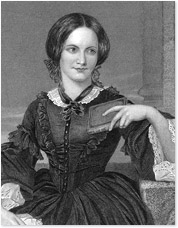 Charlotte Brontë
Charlotte Brontë
(1816-1855)New York Public Library Digital Gallery, 483297.

The Brontës: Tuberculosis afflicted almost the entire Brontë family in the mid-nineteenth century. Five of the six children and their mother all succumbed to the disease. Maria died in 1820 in advance of her children. Shortly after being sent away to school, the eldest girls, Maria (1814-1825) and Elizabeth (1815-1825) died. The three other girls achieved literary success before their deaths: Charlotte with Jane Eyre, Emily with Wuthering Heights, and Anne with Agnes Grey and The Tenant of Wildfell Hall. Their brother Patrick Branwell died in 1848 at the age of thirty-one, some believe from tuberculosis, and Emily (1818-1848) died shortly after her brother from pulmonary tuberculosis. Anne (1820-1849) died the following year. Charlotte survived to marry, but died in 1855 of complications to her pregnancy and of tuberculosis.
-
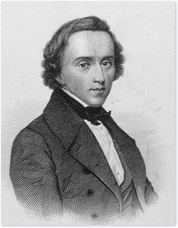 F.F. Chopin
F.F. Chopin
(1810-1849)New York Public Library Digital Gallery, 1121285.

Frédéric Chopin (1810-1849): Born near Warsaw, Poland, Chopin was a musical prodigy, playing and composing for the piano by age seven. At age eleven he performed for Alexander I, Tsar of Russia. At twenty-one he moved to Paris, where he continued his musical career. Chopin was plagued by ill-health for most of his life. His younger sister Emelia died of tuberculosis in 1827 at age fourteen, and his father later died of the same disease in 1844. Chopin’s respiratory symptoms became progressively worse after 1845 until his death in 1849. Tuberculosis is listed on the death certificate as the cause of death.
-
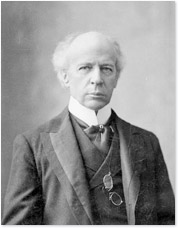 Rt. Hon. Sir Wilfrid Laurier
Rt. Hon. Sir Wilfrid Laurier
(1841-1919).William James Topley / Library and Archives Canada / C-001971

Wilfred Laurier (1841-1919): Laurier came from a family plagued by tuberculosis. He lost his mother and three siblings to the disease. Laurier himself suffered from tuberculosis throughout his life and forty-five year political career. He was Prime Minister of Canada from 1896 to 1911
-
 Shanawdithit (Spirit of the Beothuk) (2005)
Shanawdithit (Spirit of the Beothuk) (2005)
By Gerry Squires, at the Beothuk Interpretation Centre, Boyd's Cove, Newfoundland. Image in the Public Domain.

Shanawdithit (c. 1801-1829): Shanawdithit (also known as Shawnadithit and Nancy April) is the last known survivor of the Beothuk people of Newfoundland. The Beothuk lost access to the marine resources they relied on for survival as Europeans began to settle the coast of Newfoundland in the late eighteenth and early nineteenth centuries. Starving and ill, Shanawdithit, her mother, and sister were captured by English furriers at Badger Bay in 1823 and brought to St. John’s, where the governing authority decided to return the women to their people as the bearers of gifts and trade goods. Unable to locate their people, the women went to a colonial settlement in Exploits Bay where Shanawdithit’s mother and sister soon died of consumption. Shanawdithit remained as a servant in John Peyton Junior’s household in Exploits Bay until 1828, when she was sent to the Beothick Institution in St. John’s. There she was able to communicate much of what we now know about Beothuk language and culture to William Eppes Cormack. Shanawdithit’s health was precarious though, and she died of pulmonary consumption on 6 June 1829 while living in the home of the Attorney General, James Simms. She was buried in the military and naval cemetery on the south side of St. John’s, but in 1830 her skull was sent to the Royal College of Physicians of London. It was lost during the Blitz bombings of WWII.
-
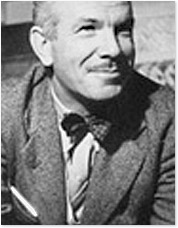 Dr. Norman Bethune
Dr. Norman Bethune
(1890-1939)Charles F. Comfort/Library and Archives Canada/PA-157630

Dr. Norman Bethune (1890-1939): Dr. Bethune was diagnosed with tuberculosis during his medical residency. He first went to a Sanatorium near Gravenhurst to recover, but eventually went to the Saranac Lake Sanatorium. There he underwent a pneumothorax treatment and staged a quick recovery. His success led him to promote the treatment in Canada and improve the pneunomothorax machine. Bethune would go on to practice medicine in Spain and China.
-
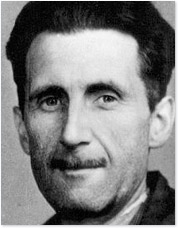 George Orwell
George Orwell
(1903-1950)Image in Public Domain. Courtesy of www.en.wikipedia.org and http://www.netcharles.com/orwell/

George Orwell (1903-1950): Eric Arthur Blair, best known under the pen name of George Orwell, served as an imperial policeman in Burma, taught in England, and fought in the Spanish Civil War, as well as being a prolific writer. He is best known for Animal Farm and 1984. Orwell was diagnosed with tuberculosis in 1938 and stayed in a sanatorium for several months to recuperate. His tuberculosis returned in 1947. Despite residence in a sanatorium and treatments with streptomycin, Orwell was moved to a hospital in London in 1949. He died there in 1950 when an artery in his lungs burst.
-
 Vivien Leigh
Vivien Leigh
(1913-1967)New York Public Library Digital Gallery, th-28941

Vivien Leigh (1913-1967): Vivien Leigh was a Hollywood actress, best know for Oscar-winning roles in Gone with the Wind (1939) and A Streetcar Named Desire (1951). Leigh had contracted tuberculosis by 1945, when symptoms led to a first diagnosis. Her symptoms returned later in life and tuberculosis is listed as her cause of death.
-
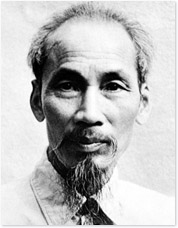 Ho Chi Minh
Ho Chi Minh
(1890-1969)Image in Public Domain, www.en.wikipedia.org

Ho Chi Minh (1890-1969): Ho Chi Minh was a communist revolutionary who fought for Vietnam’s independence from France. He suffered from tuberculosis in the 1920s, as he travelled in the Soviet Union, Thailand, Hong Kong, and China studying Marxist doctrine and building up the communist movement. In 1941 he became the leader of the Viet Minh, the party that in 1945 overthrew Emperor Bao Dai and established the Democratic Republic of Vietnam. After the Geneva Accords of 1954 the Democratic Republic of Vietnam, of which Minh was President, relocated to North Vietnam.
-
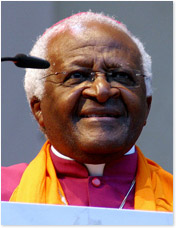 Desmond Tutu
Desmond Tutu
(1931-)Credit: Elke Wetzig, www.en.wikipedia.org

Desmond Tutu (1931-): A retired Anglican bishop, Desmond Tutu was a key figure in the fight to end South African apartheid and is an activist who promotes democracy and human rights world-wide. He suffered from tuberculosis in his youth and has played an active role in improving the medical treatment available for the disease, as well as HIV and AIDS, in South Africa. The Desmond Tutu TB Centre was founded in 2003.

